What is Bioluminescence?
Illuminating Nature’s Beauty: The Beauty of Bioluminescence
Introduction
In the midst of Earth’s incredible diversity of life, there exists a phenomenon that captivates scientists and enthusiasts alike— a natural light show produced by living organisms. Bioluminescence, the ability of certain organisms to emit light through chemical reactions, unveils a world of beauty and mystery that stretches from the ocean depths to the darkest forests. In this blog, we’ll delve into the science behind bioluminescence, its various ecological roles, and the enchanting organisms that bring this phenomenon to life.
Bioluminescence is found in a variety of organisms, including certain species of bacteria, fungi, jellyfish, fireflies, certain types of fish, and some deep-sea creatures. It serves various purposes in these organisms, such as communication, attracting prey, deterring predators, camouflage, and mate attraction.
“Natural light production in organisms” refers to the fascinating ability of certain living creatures to generate and emit light through biochemical processes. This phenomenon, known as bioluminescence, involves the interaction between specific molecules such as luciferin and enzymes like luciferase. Bioluminescence serves various ecological purposes, including communication, predation, attraction, and camouflage. Organisms ranging from fireflies and jellyfish to deep-sea creatures exhibit this captivating natural light production, offering insights into their unique adaptations and roles within their ecosystems.
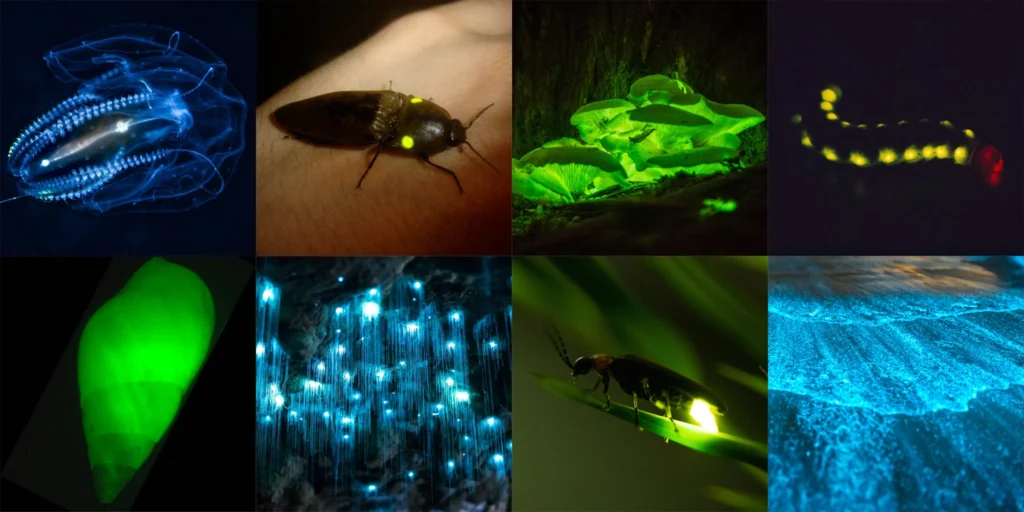
The Chemistry Behind Bioluminescence:
At the heart of bioluminescence lies a captivating chemistry involving two main players: luciferin and luciferase. Luciferin is a light-emitting molecule found in the cells of bioluminescent organisms, while luciferase is the enzyme that catalyzes the reaction between luciferin, oxygen, and other co-factors. When these elements come together, they produce a burst of light—often blue, green, or even red—without producing significant heat. This phenomenon is in stark contrast to the heat-producing combustion of a fire.
Ecological Roles of Bioluminescence:
Nature is a master of adaptation, and bioluminescence serves a variety of functions within the intricate web of life:
Communication:
Fireflies synchronize their flashes to communicate with potential mates, creating an ethereal dance of light that illuminates summer evenings.
Predation and Defense:
Deep-sea creatures employ bioluminescence to attract prey or to confuse and deter predators. The anglerfish’s bioluminescent lure is a prime example, beckoning unsuspecting prey in the darkness of the deep ocean.
Camouflage and Disguise:
Some animals, like the Hawaiian bobtail squid, use bioluminescent bacteria to mimic the moonlight, concealing their silhouette from predators lurking below.
Counterillumination:
Marine organisms such as the flashlight fish illuminate their undersides to match the faint sunlight filtering down from the surface, thus minimizing their visibility from predators below.
Example of Bioluminescent Organisms:
Deep-Sea Creatures:
Many organisms living in the deep ocean rely on bioluminescence due to the absence of sunlight. The anglerfish is a classic example. The anglerfish has a bioluminescent lure that dangles in front of its mouth, which it uses to attract prey in the darkness of the deep sea.
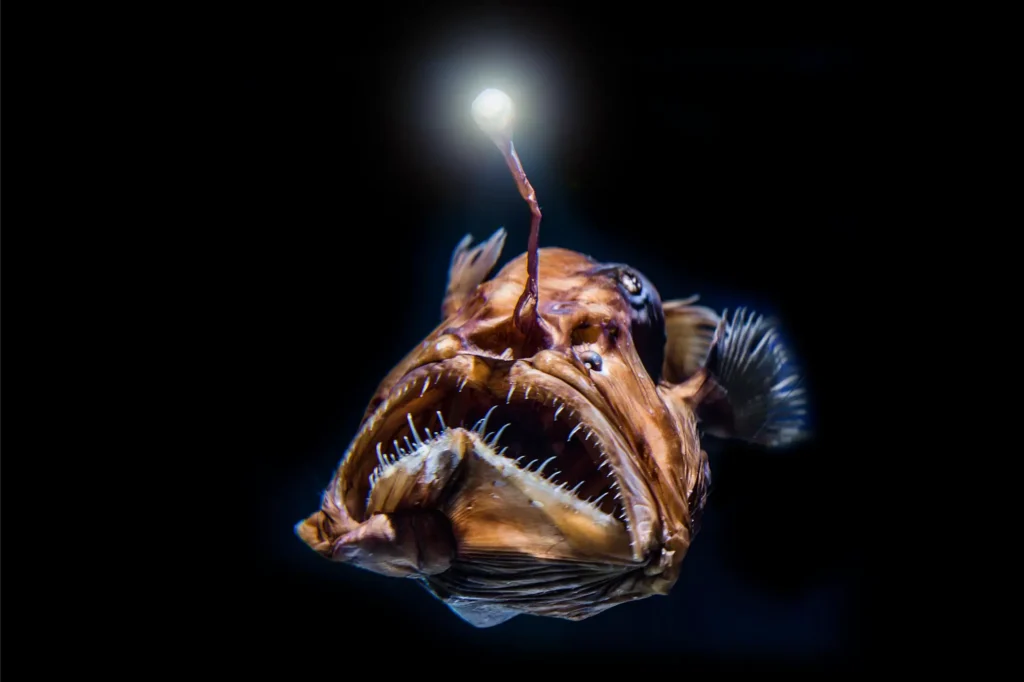
Glowing Plankton:
Certain types of plankton, such as dinoflagellates, exhibit bioluminescence. When these microscopic organisms are disturbed by movements in the water, they produce a beautiful blue-green glow. This can create a stunning effect when large numbers of bioluminescent plankton are present, often referred to as “milky seas.”

Comb Jellyfish:
Comb jellyfish, also known as ctenophores, possess rows of cilia that refract light and create a shimmering rainbow-like effect. Some species of comb jellies are bioluminescent, emitting flashes of light along their body. This could be used to attract prey or confuse predators.

Glowing Fungi:
There are species of bioluminescent fungi that can be found in forests and decaying wood. These fungi produce a soft greenish glow, which is thought to attract insects. The insects then aid in the fungal spore dispersal.
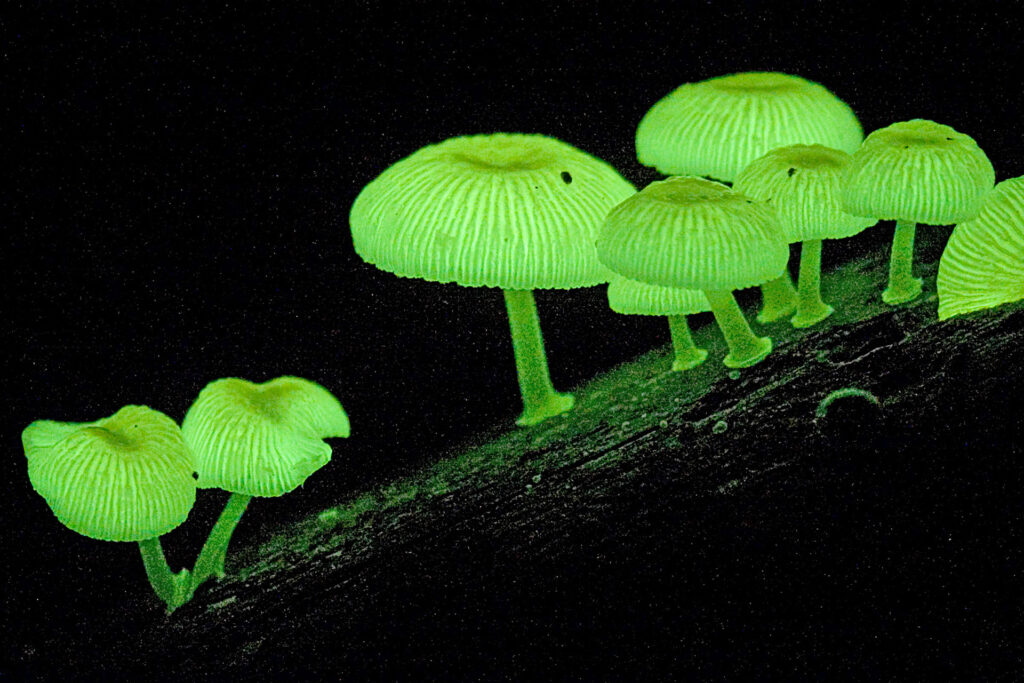
Luminous Bacteria:
Some species of bacteria, such as Vibrio fischeri, are bioluminescent. These bacteria can be found in symbiotic relationships with certain marine animals, like the Hawaiian bobtail squid. The bacteria emit light that helps camouflage the squid by matching the moonlight filtering down from above.

Glowing Insects:
Apart from fireflies, other insects like railroad worms and certain species of click beetles are also bioluminescent. Railroad worms, for example, have segments along their bodies that emit a soft blue-green glow.
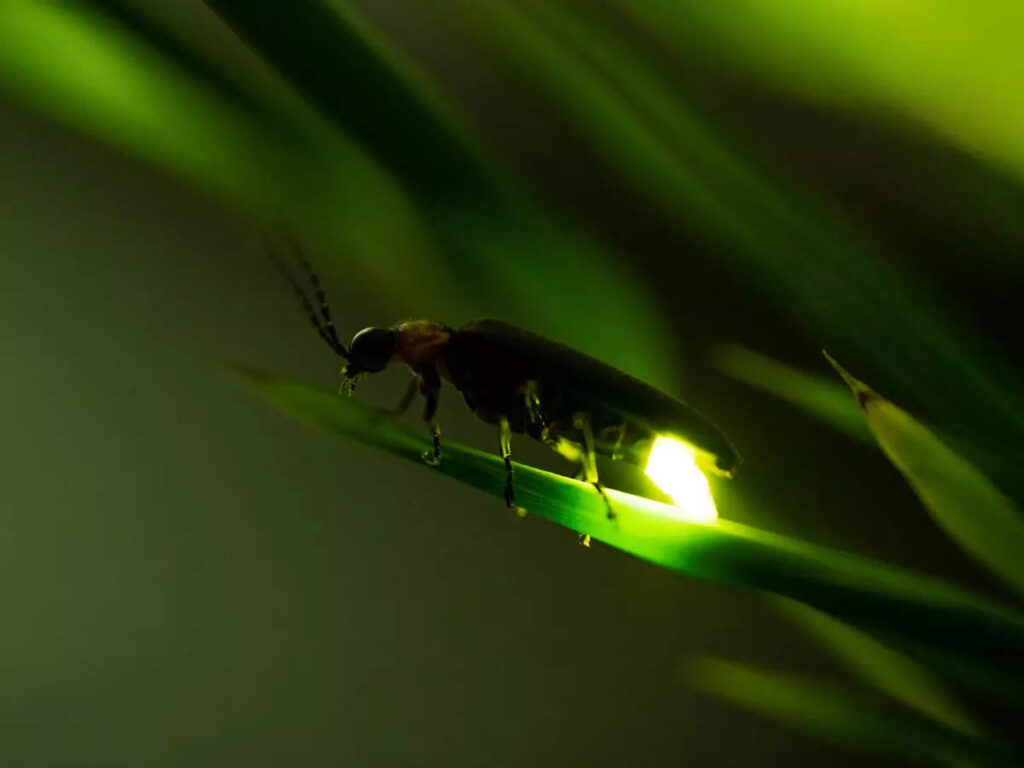
Glowing Octopuses:
Some deep-sea octopuses, such as the Stauroteuthis genus, are known to have bioluminescent displays on their skin. They can use these displays to communicate with members of their own species or potentially to deter predators.
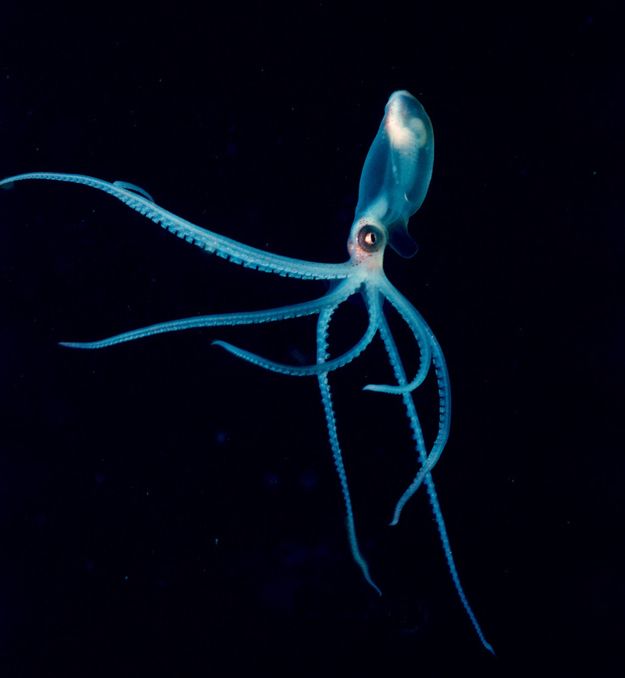
These are just a few examples of the many organisms that exhibit bioluminescence across different ecosystems and environments.
Bioluminescence and Scientific Exploration
Beyond its visual appeal, bioluminescence has practical applications:
Biotechnology: Luciferase enzymes are used in laboratories to detect biological molecules, aiding research in genetics and medicine.
Environmental Monitoring: Bioluminescent bacteria can be employed as indicators of pollution or toxicity in water bodies.